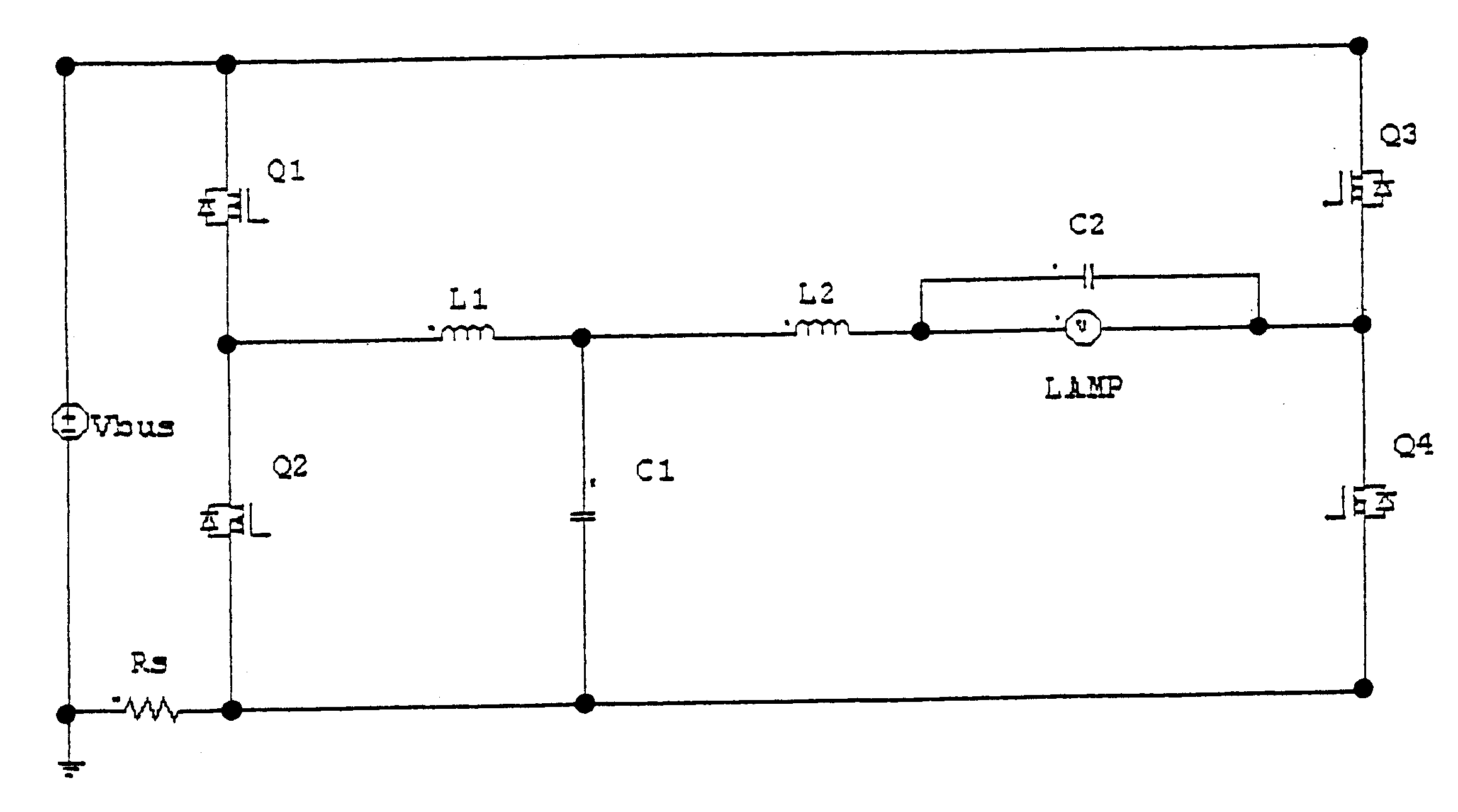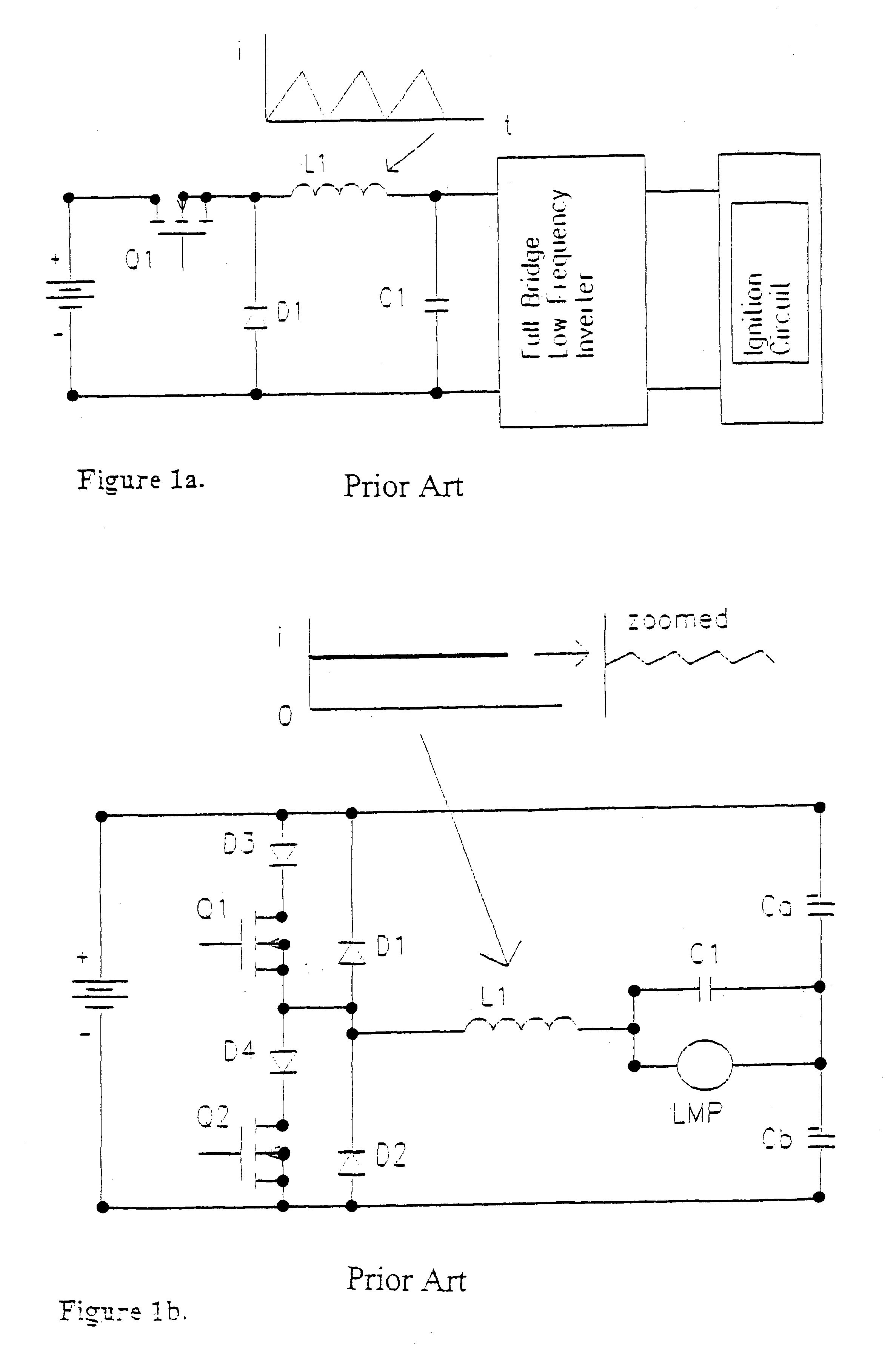Variable structure circuit topology for HID lamp electronic ballasts
a technology of variable structure circuit and electronic ballast, which is applied in the direction of electric variable regulation, process and machine control, instruments, etc., can solve the problems of high circulating resonant current, high ignition voltage generation using the resonant method, and q1, q2, in hard switching mode, etc., and achieve high speed
- Summary
- Abstract
- Description
- Claims
- Application Information
AI Technical Summary
Benefits of technology
Problems solved by technology
Method used
Image
Examples
Embodiment Construction
FIG. 3a illustrates one embodiment of the present invention. As shown in FIG. 1, the drive circuit includes a power source Vbus that is operated through a circuit control (not shown). The circuit of FIG. 3a also illustrates four high frequency switching devices Q1, Q2, Q3, and Q4 which are connected to the power source Vbus. In the disclosed embodiment, high frequency switching devices Q1 to Q4 comprise a high frequency semiconductor device, such as, for example, a MOSFET transistor. However, it is understood that alternative semiconductor devices, such as, for example, a bipolar transistor, may be used without departing from the scope and / or spirit of the instant invention. In the illustrated embodiment of FIG. 3a, switching devices Q1 to Q4 are shown as high frequency MOSFET devices. Preferably, each high frequency MOSFET device includes an integrated high speed diode. However, it is understood that the diode may be external to the MOSFET device, without departing from the scope a...
PUM
 Login to View More
Login to View More Abstract
Description
Claims
Application Information
 Login to View More
Login to View More - R&D
- Intellectual Property
- Life Sciences
- Materials
- Tech Scout
- Unparalleled Data Quality
- Higher Quality Content
- 60% Fewer Hallucinations
Browse by: Latest US Patents, China's latest patents, Technical Efficacy Thesaurus, Application Domain, Technology Topic, Popular Technical Reports.
© 2025 PatSnap. All rights reserved.Legal|Privacy policy|Modern Slavery Act Transparency Statement|Sitemap|About US| Contact US: help@patsnap.com



